The dissection of a great American novel
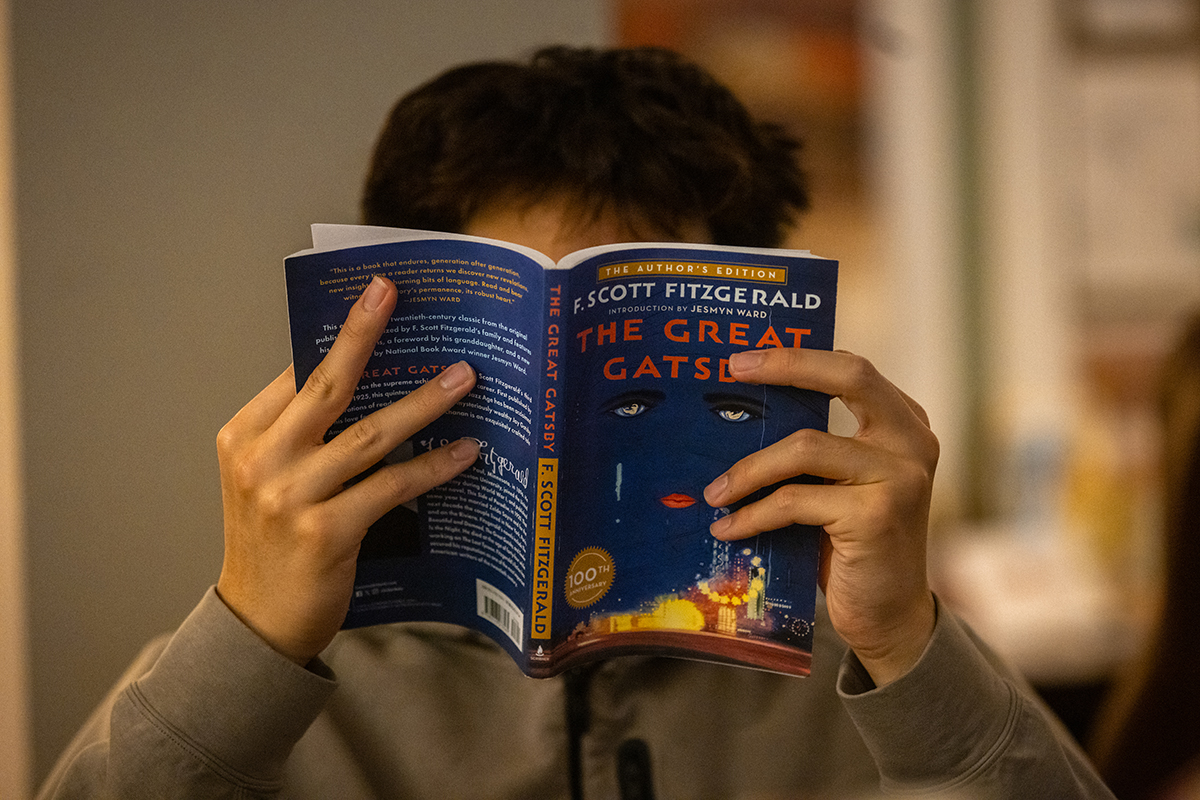
Eleventh grade English class examines F. Scott Fitzgerald's "The Great Gatsby."
Step into Instructor in English Todd Hearon’s Phillips Hall classroom and there’s a lot that catches your eye. Photos of famous Irish writers line the walls, a turntable and a stack of vinyl records sits in the corner and worldly knickknacks occupy the surfaces throughout. But it’s the outsized Harkness table — a quite literal conversation piece — that commands the room. That’s where, on an autumn afternoon, eleven uppers gather to discuss F. Scott Fitzgerald’s classic, “The Great Gatsby.”
The period starts with small group breakouts before the tone of a singing bowl signals the beginning of the Harkness discussion. The day’s conversation centers around chapter five, a pivotal point in which the protagonist comes face to face with his lost love.
Adriano Bozzo ’26 opens the discussion by pointing out Fitzgerald’s use of the weather to symbolize Gatsby’s mood. “When Gatsby was nervous and uptight before meeting Daisy it was raining outside, but once he was reunited and comfortable with her, the weather was nice again.”
As the dissection of the novel continues, Hearon jumps in to point out an untapped topic, and another clever device of Fitzgerald’s, in a scene that finds Daisy fawning over Gatsby’s abundant and varied shirt collection. “There’s definitely some kind of significance behind the different colors and materials of the shirts, maybe we can also try to figure out what that is,” he puts forth to the table.
Zain Reza ’26 jumps in.
“Are any of these [shirt] colors tied into spring and fall?,” he wonders aloud before citing a passage from the chapter. “I’ve got a man in England who buys me clothes. He sends over a selection of things the beginning of each season,” Reza recites before adding a finishing thought. “This strengthens the idea that the clothes represent time passing.”
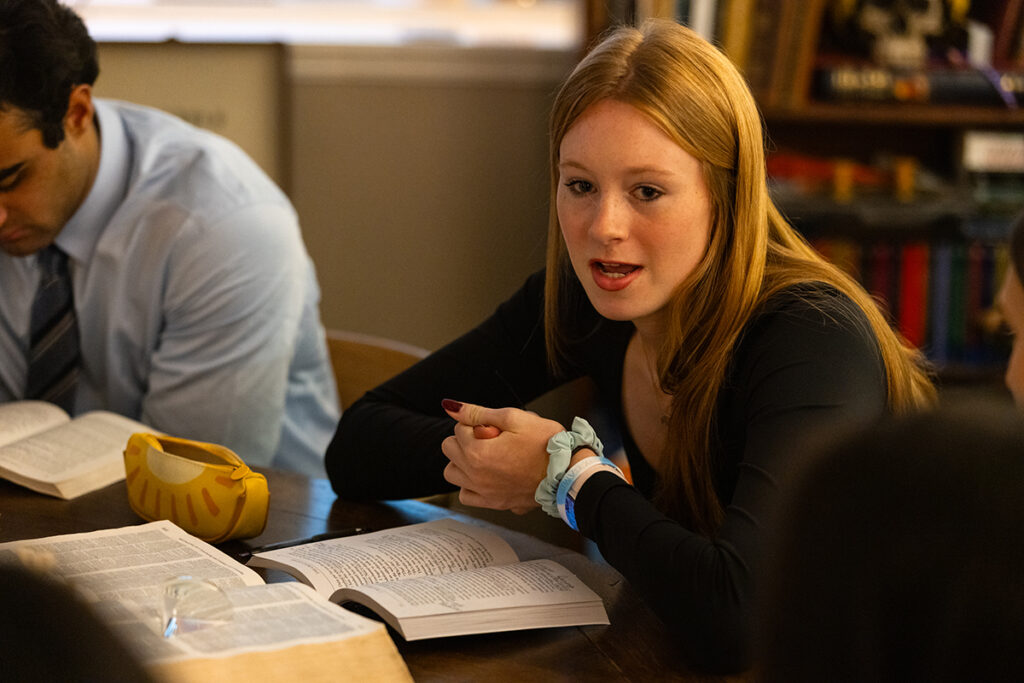
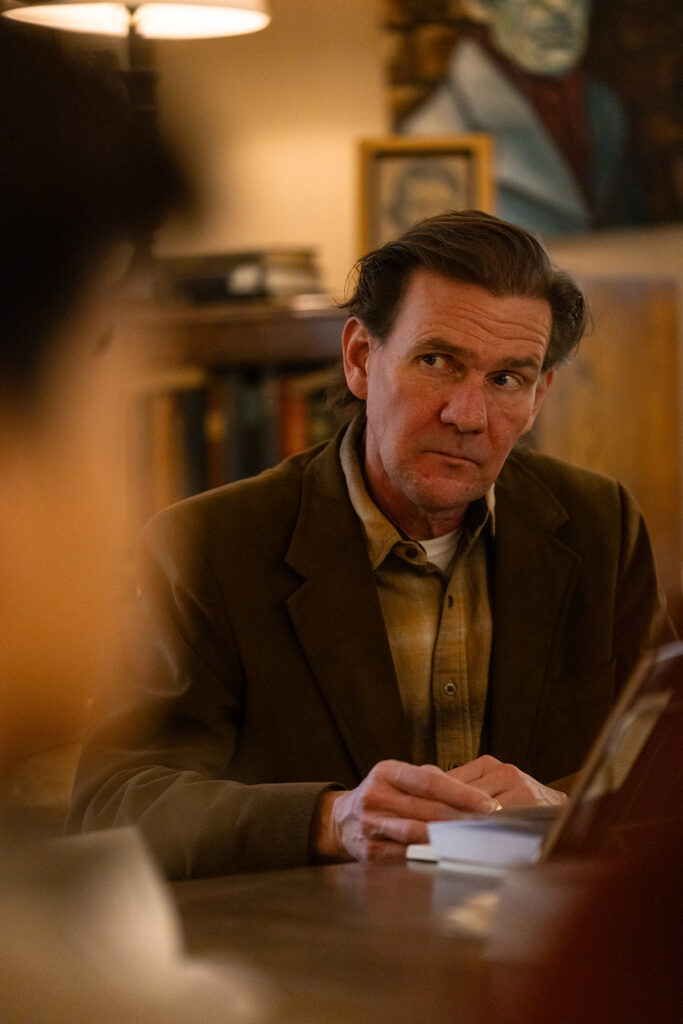
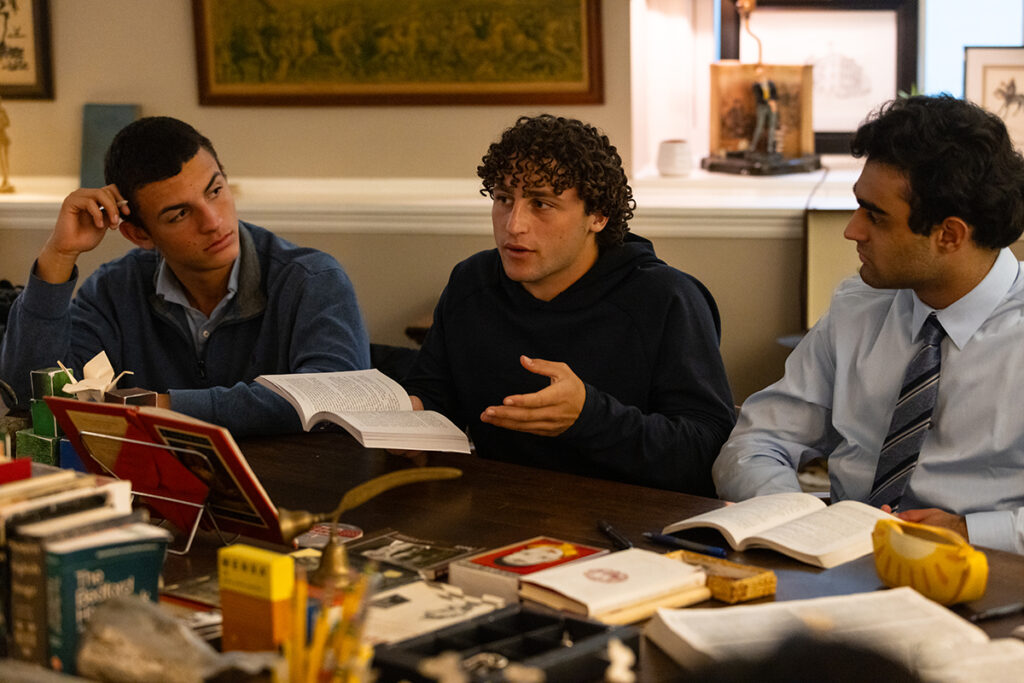
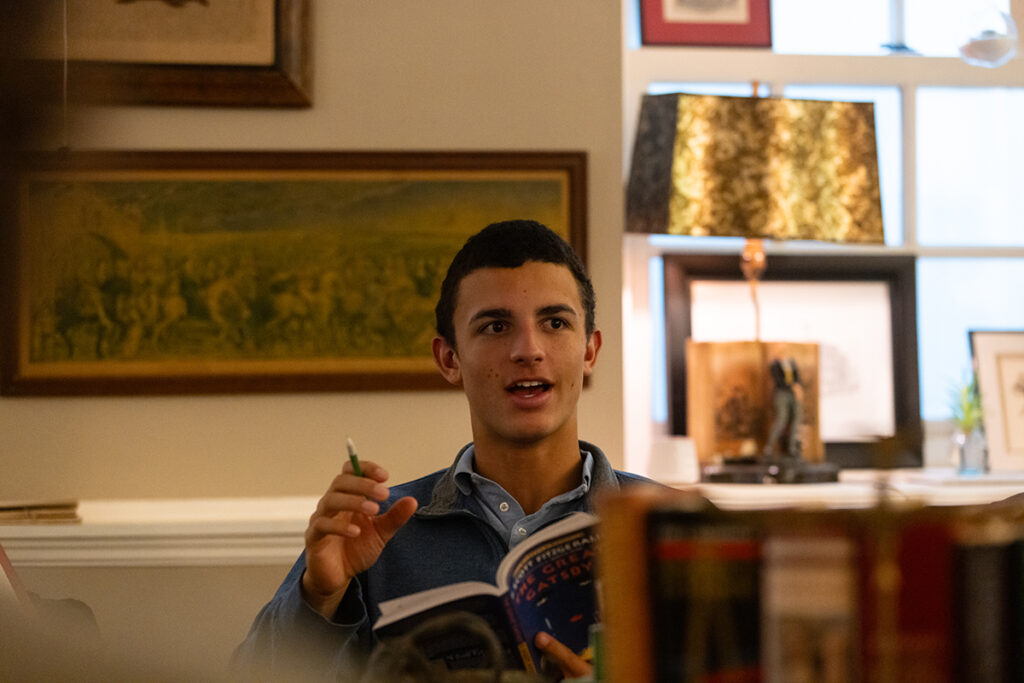
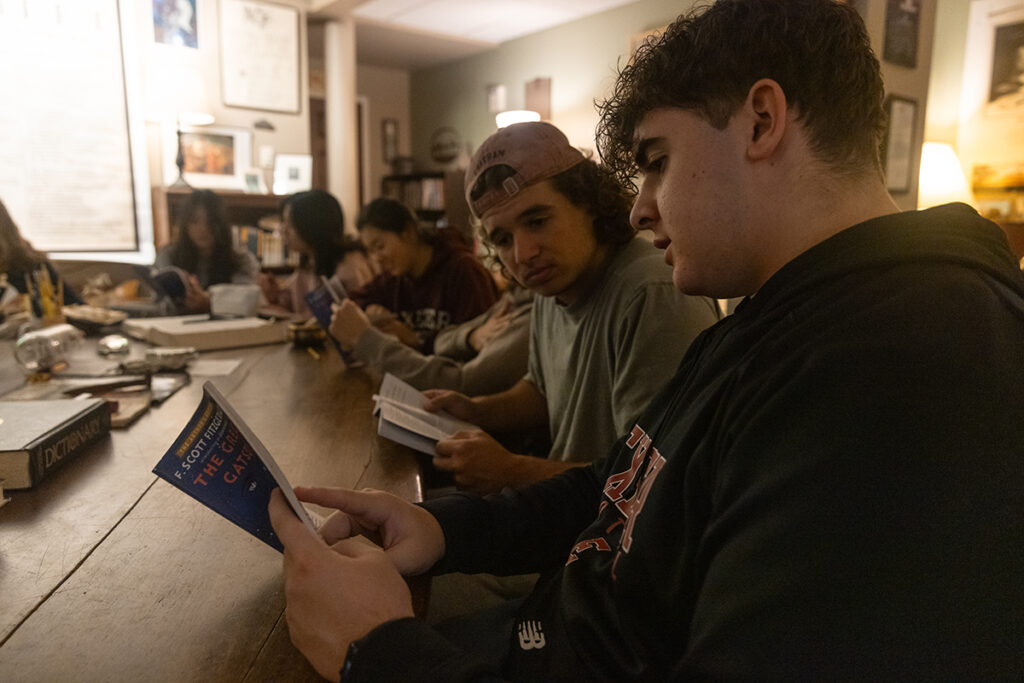
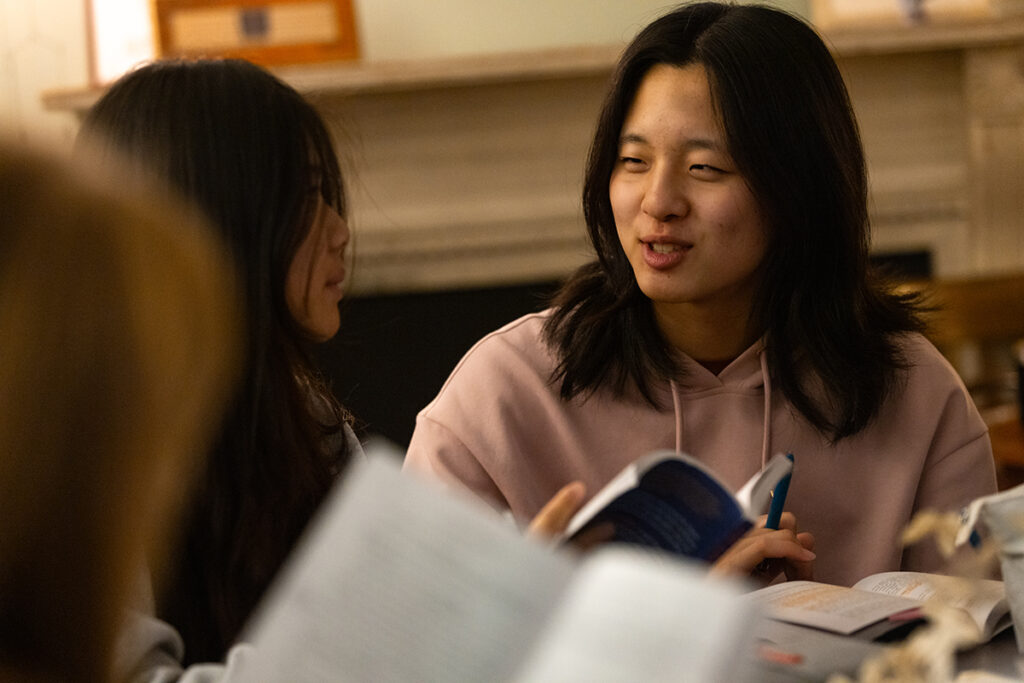
With the group collectively satisfied by Reza’s interpretation, Julia Malysa ’26 presents a new topic of discussion, the Gatsby’s impression of Daisy following the reunion. Pages turn in unison as she begins.
“On page 95, last paragraph — ‘There must have been moments even that afternoon when Daisey tumbled short of his dreams, not through her own fault, but because of the colossal vitality of his illusion,’” she reads. “I think that Gatsby just built her up so much in his head, and Nick sees this too, that there’s no way that she’s going to be as perfect as he might’ve imagined her.”
Once again the singing bowl chimes and the discussion, at least for this day, comes to a close.